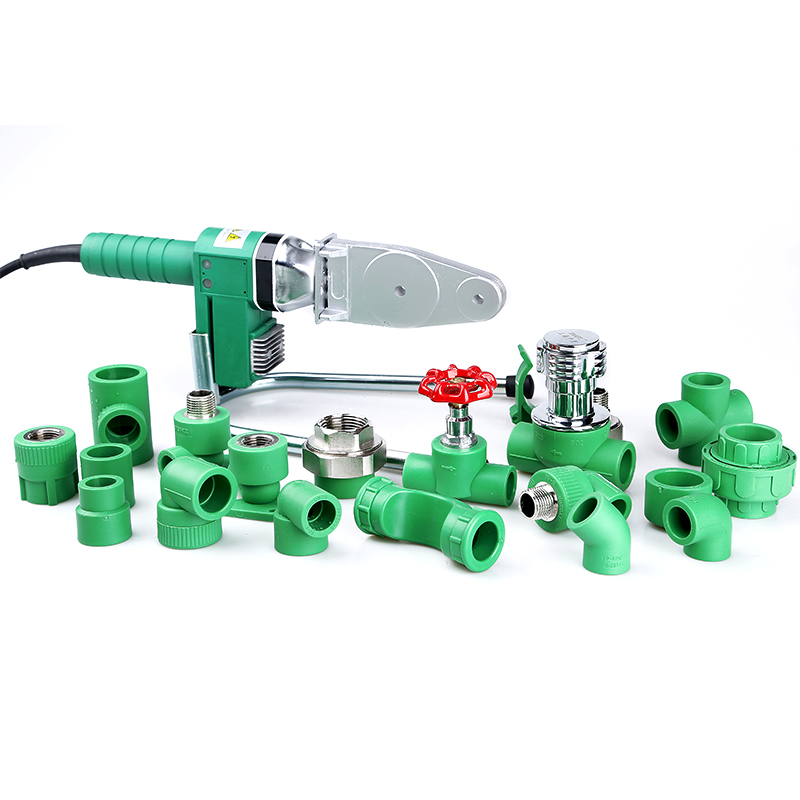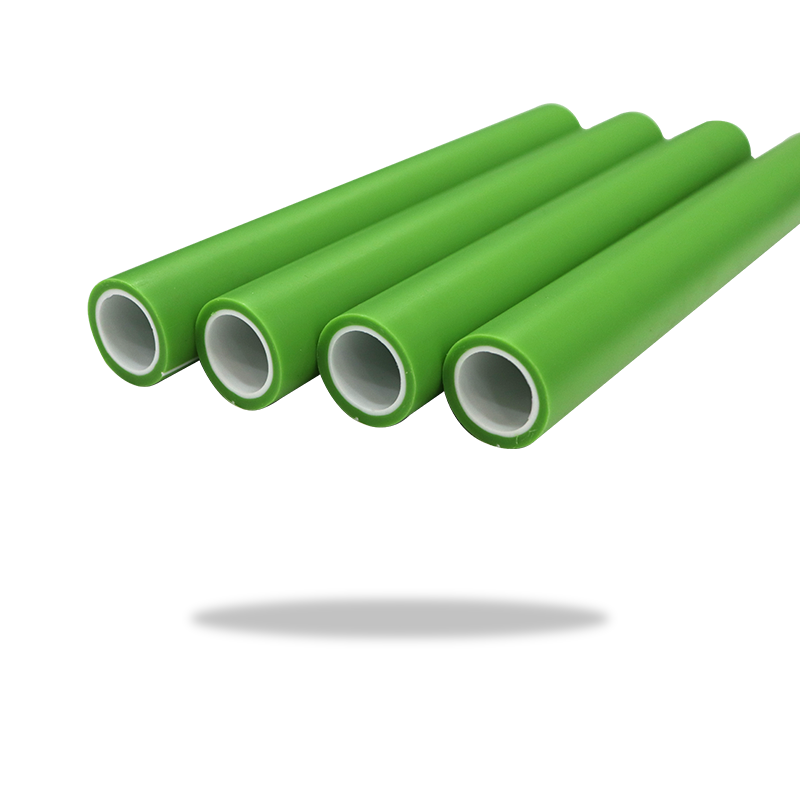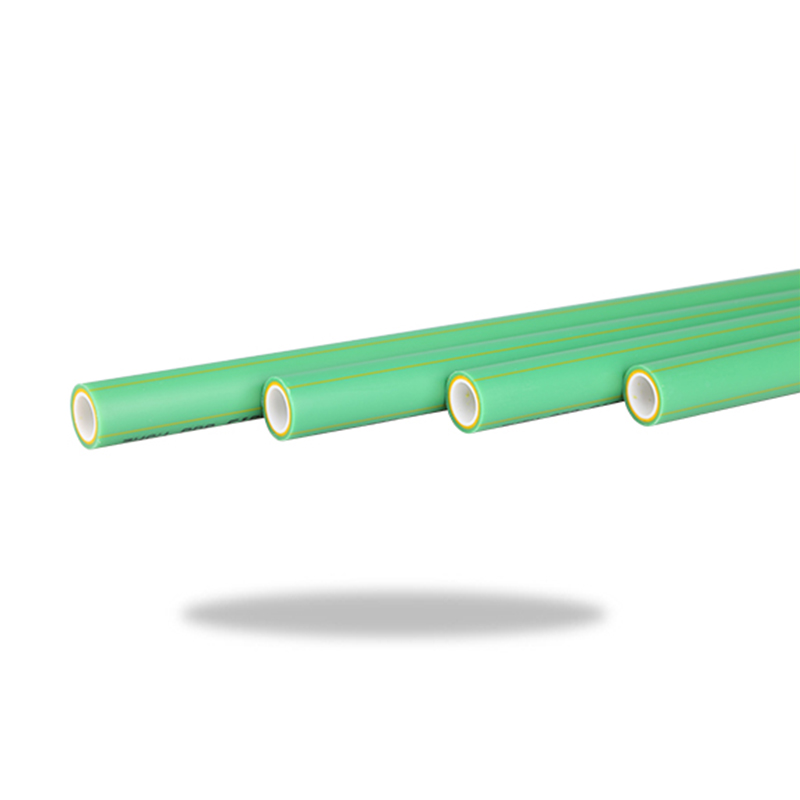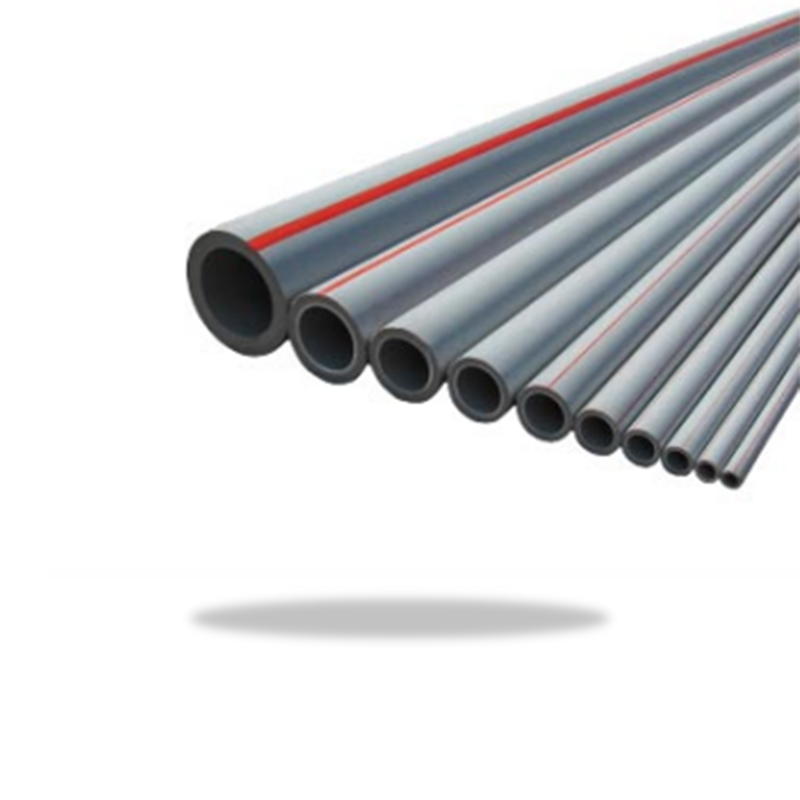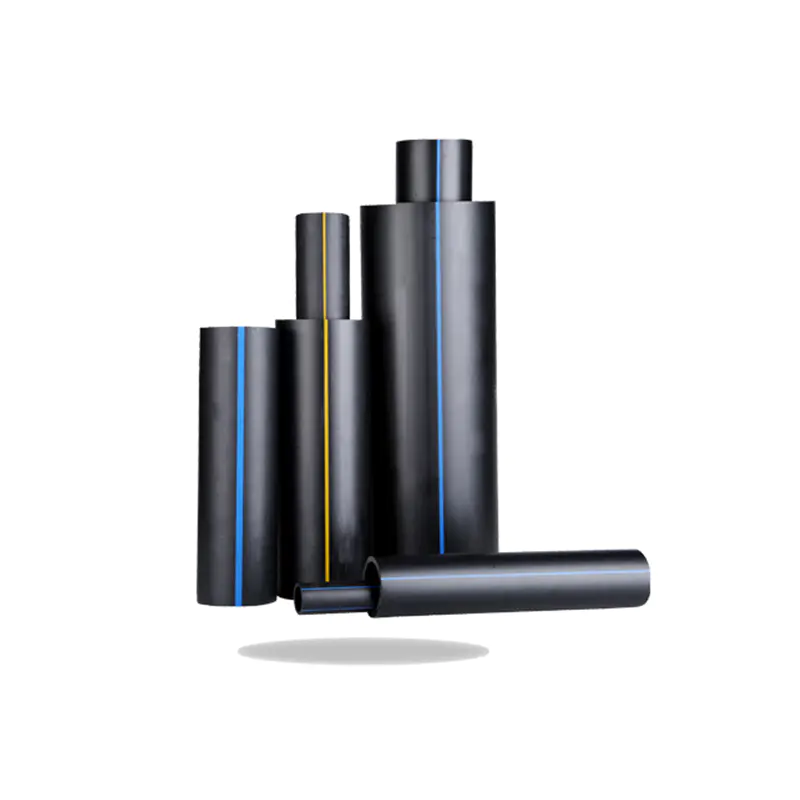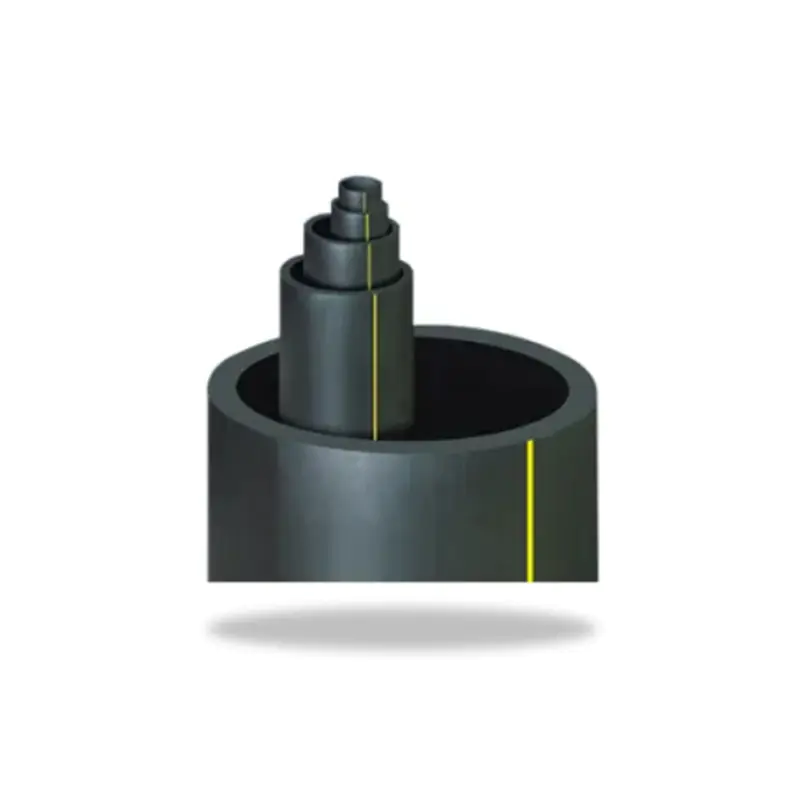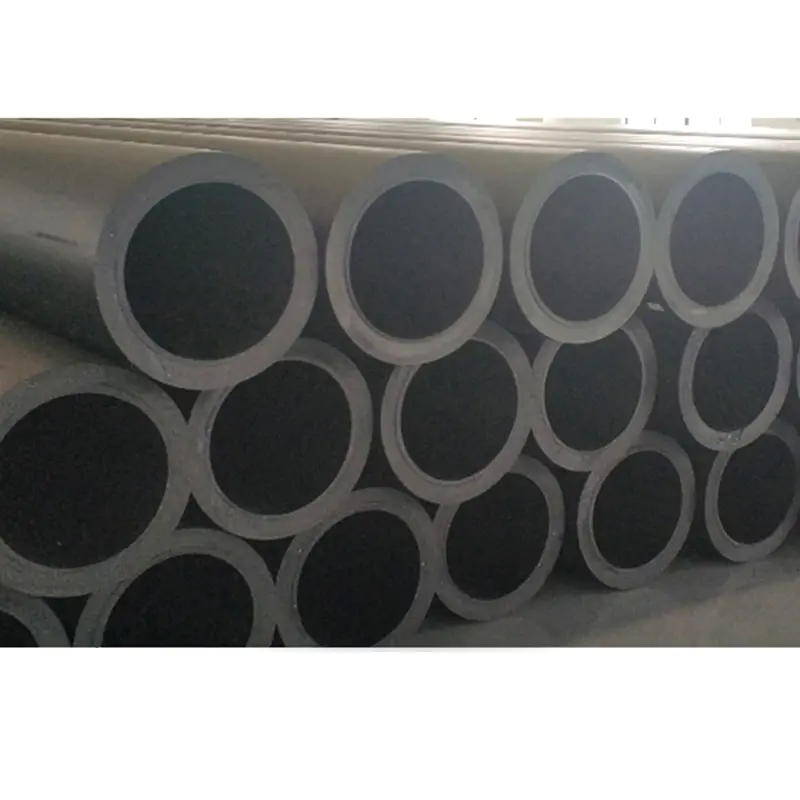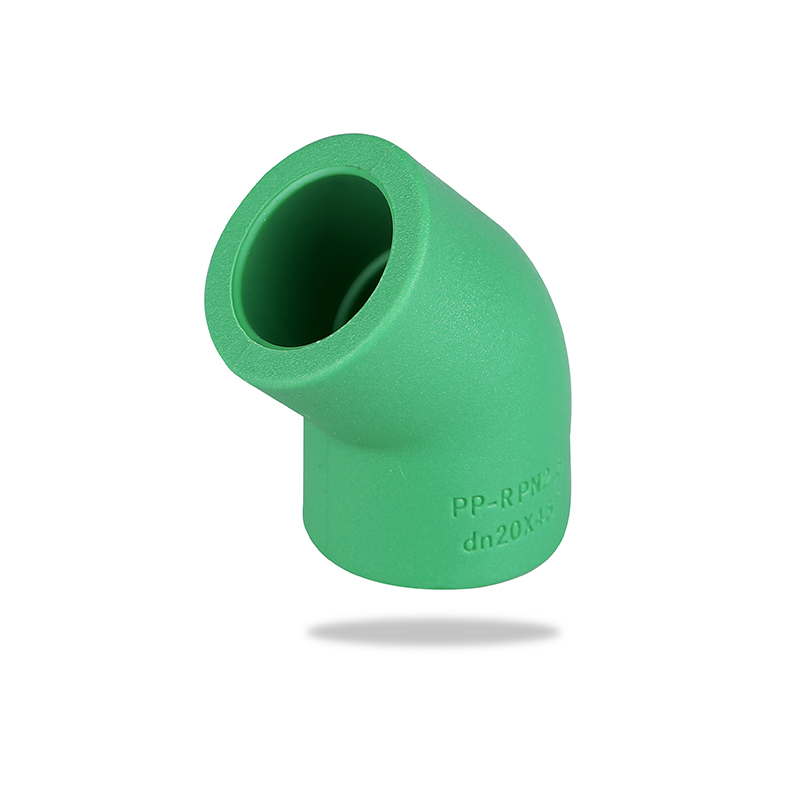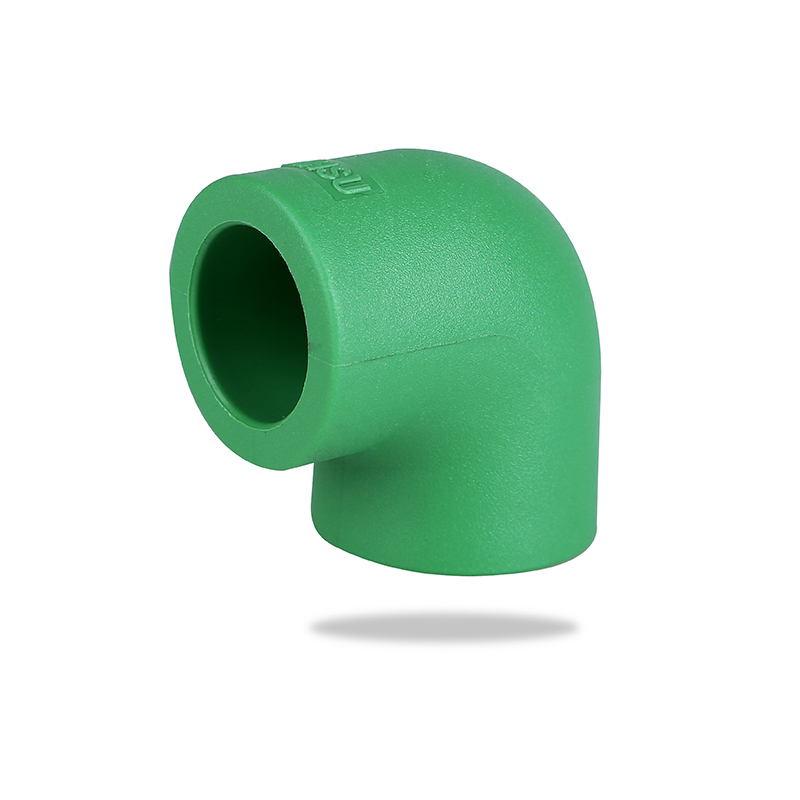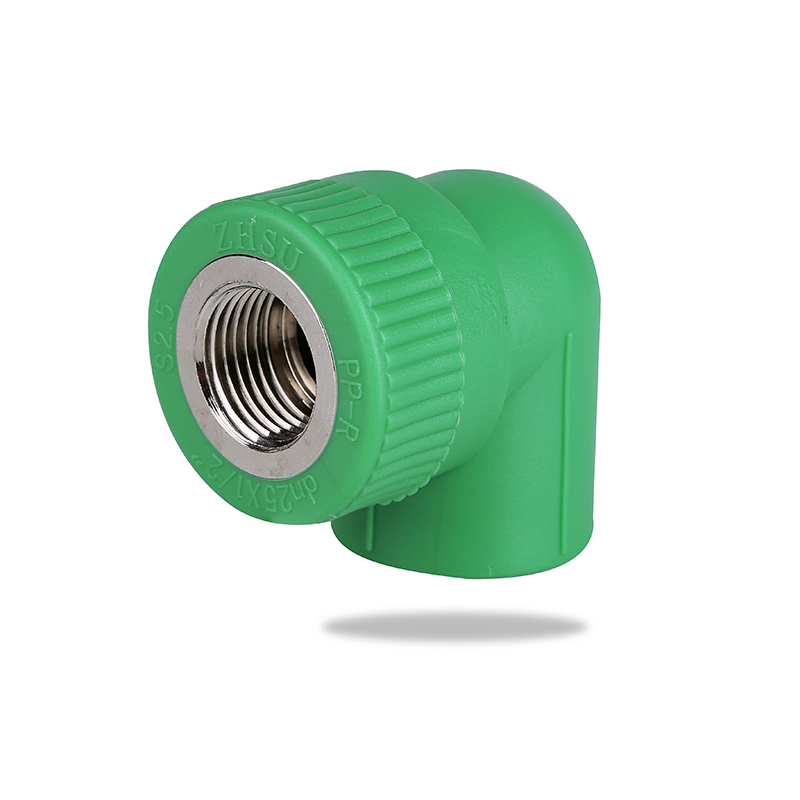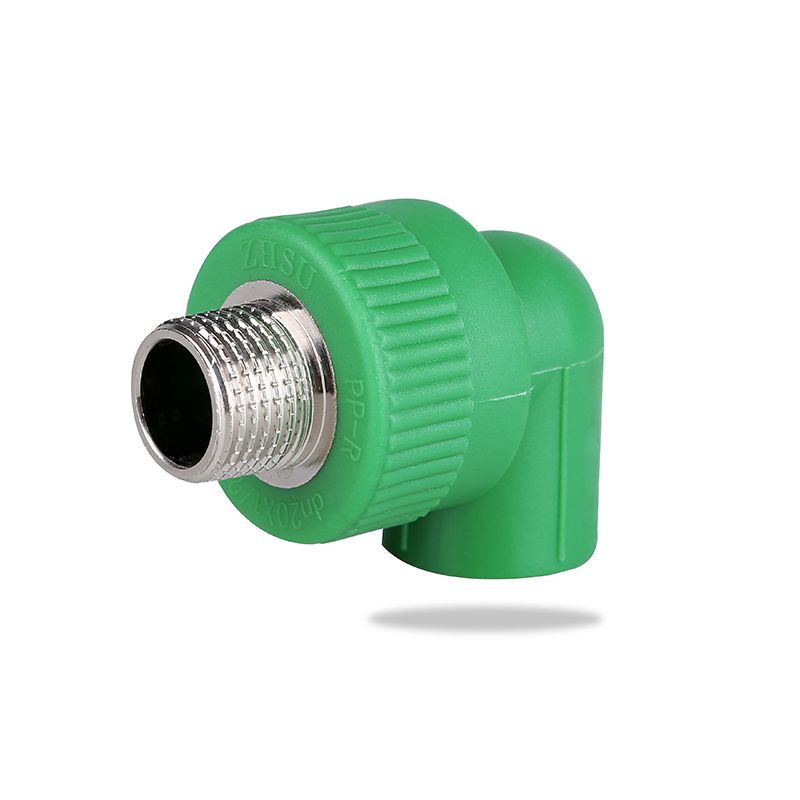Introduction to PPR Couplings
In modern plumbing and piping systems, materials play a crucial role in determining the durability, efficiency, and overall performance of the installation. Among the wide variety of piping materials available today, Polypropylene Random Copolymer (PPR) has become a popular choice for both residential and industrial applications. One of the key components used within PPR piping systems is the PPR coupling, a specialized fitting that ensures reliable and leak-free connections between PPR pipes. In this introduction, we’ll explore what PPR is, define what a PPR coupling is, and explain why PPR couplings are commonly used in modern piping systems.
What is PPR?
PPR stands for Polypropylene Random Copolymer, a type of plastic that is engineered to withstand high pressure and temperature while resisting chemical corrosion and physical wear. PPR materials are typically used in the manufacturing of pipes and fittings for hot and cold water systems, including drinking water pipelines, heating systems, and industrial applications.
PPR is characterized by its random copolymer structure, which means that the polymer chains are arranged in a way that enhances flexibility, impact resistance, and thermal performance. This makes PPR superior to traditional plastics and many metal alternatives for plumbing purposes. It is known for being lightweight, recyclable, and non-toxic, which also contributes to its popularity in environmentally friendly construction and infrastructure projects.
What is a PPR Coupling?
A PPR coupling is a type of pipe fitting used to connect two lengths of PPR pipe. It can be used to join pipes of the same diameter or different diameters, depending on the specific type of coupling. PPR couplings are molded from the same high-quality polypropylene material as the pipes they connect, ensuring consistency in performance, durability, and resistance to temperature and pressure changes.
Couplings are typically used in a fusion welding process, where heat is applied to both the pipe and the fitting, allowing them to fuse together into a single, seamless joint. This fusion process eliminates the need for adhesives or mechanical fasteners, reducing the likelihood of leaks and providing a clean, strong bond that can last for decades.
Why Use PPR Couplings?
There are several compelling reasons why PPR couplings are widely used in plumbing and piping systems:
1. Seamless Integration
PPR couplings create a homogeneous joint with the pipe, meaning that once the connection is made, the pipe and coupling become one continuous material. This reduces internal turbulence and enhances flow efficiency.
2. Leak-Proof Connections
Thanks to the fusion welding process, PPR couplings form extremely tight and secure connections. This greatly reduces the chance of leaks, even under high pressure or fluctuating temperatures.
3. High Temperature and Pressure Resistance
PPR couplings can withstand temperatures up to 95°C (203°F) and high-pressure conditions, making them suitable for hot water applications, central heating, and industrial fluid transport.
4. Chemical and Corrosion Resistance
Unlike metal fittings, PPR couplings are resistant to rust, corrosion, and chemical degradation. This makes them ideal for systems transporting aggressive fluids or in environments with high moisture or chemical exposure.
5. Easy and Quick Installation
The fusion welding technique used with PPR couplings is quick and easy to perform, requiring minimal labor and reducing installation time. Once fused, the joint is ready for immediate use, saving project time and labor costs.
6. Eco-Friendly and Non-Toxic
PPR is a non-toxic, recyclable material, making it a safe choice for drinking water systems and sustainable construction. The production process of PPR fittings like couplings also generates less pollution compared to metal alternatives.
7. Cost-Effective in the Long Run
Although the initial material cost may be slightly higher than PVC or other plastic systems, the low maintenance requirements, longevity, and reliability of PPR couplings make them a cost-effective solution over time.
To summarize, PPR couplings are essential components in modern PPR piping systems, providing reliable, durable, and leak-proof connections that outperform many traditional pipe joining methods. Their popularity continues to grow across residential, commercial, and industrial sectors due to their excellent thermal properties, chemical resistance, and ease of installation.
Types of PPR Couplings
PPR couplings come in various shapes and sizes to accommodate the diverse needs of modern piping systems. These couplings allow for flexible and secure connections between pipes, supporting straight lines, bends, branches, and transitions. Understanding the different types of PPR couplings is essential for choosing the right fitting for each specific application. Below are the most common and important types:
1. Straight Couplings
Straight PPR couplings, also known as socket couplings, are the most basic and widely used type. They are designed to connect two pieces of pipe of the same diameter in a straight line. These couplings are simple and highly efficient in extending pipe runs or replacing damaged sections.
Key Features:
Used for same-size pipe connections
Typically joined using heat fusion
Strong and seamless joint
Common Applications:
Extending pipelines
Repairing damaged sections
Joining two lengths of pipe during installation
Straight couplings are essential for maintaining the continuity of piping systems without altering direction or pipe size.
2. Reducing Couplings
Reducing PPR couplings are used when there is a need to connect pipes of different diameters. These couplings have two ends of unequal size and serve to transition from a larger pipe to a smaller one, or vice versa.
Key Features:
One end has a larger diameter than the other
Used for downsizing or upsizing pipelines
Enables flexibility in system design
Common Applications:
Water supply systems with changing flow requirements
Integrating new extensions to existing pipelines
Connecting equipment with different pipe inlet/outlet sizes
Reducing couplings are especially useful in both residential and industrial systems, where transitions between different pipe sizes are common.
3. Elbow Couplings
Elbow couplings, also referred to as bends or elbow fittings, are designed to change the direction of the piping system, usually by 90° or 45°. These couplings allow the pipeline to navigate around obstacles or fit within architectural constraints.
Key Features:
Available in 90° and 45° angles
Provides smooth directional changes
Helps in routing pipelines efficiently
Common Applications:
Bathroom and kitchen piping layouts
HVAC systems with angular bends
Compact installations in tight spaces
Using elbow couplings reduces the need for excessive straight pipe lengths, improving space usage and system aesthetics.
4. Tee Couplings
Tee couplings, also known simply as tees, allow a single pipe to branch into two. Shaped like the letter “T,” this fitting has one inlet and two outlets (or vice versa), usually at 90° angles.
Key Features:
Three connection points
Creates branch lines from a main pipeline
Available in equal or reducing variants
Common Applications:
Domestic plumbing systems (e.g., branching to a tap or appliance)
Irrigation systems
Central heating systems
Tee couplings are essential for distributing water or fluid to multiple outlets in a clean and organized manner.
5. Threaded Couplings
Threaded PPR couplings combine plastic and metal components. One or both ends are threaded, allowing them to connect to metal pipes, valves, or appliances that require a threaded joint. These are especially useful for integrating PPR systems with existing metal infrastructure.
Key Features:
One or more threaded ends (male or female)
Metal inserts are often embedded for strength
Provides compatibility between plastic and metal components
Common Applications:
Connecting to water meters or pumps
Plumbing connections to fixtures with threaded inlets
Mixed-material systems in renovation projects
Threaded couplings offer versatility and are critical when dealing with legacy systems or equipment with standard threads.
Choosing the Right PPR Coupling
When selecting a PPR coupling for a specific application, it is important to consider the following factors:
1. Pipe Size Compatibility
Always choose couplings that match the diameter of the pipes involved. For transitions, a reducing coupling will be required.
2. Application Requirements
Different couplings serve different purposes—straight for length extension, elbow for redirection, tee for branching, and threaded for metal interface. Use the correct type for the task at hand.
3. Pressure and Temperature Ratings
Make sure the coupling meets the required pressure class (PN rating) and can handle the system’s operational temperatures.
4. Installation Space
Some fittings, such as elbows or tees, require more physical space. Ensure the coupling fits within the available installation zone.
5. Connection Method
Most PPR couplings are designed for heat fusion, but threaded variants require manual tightening. Use the appropriate tools and method for a secure fit.
Conclusion of Section
PPR couplings are essential components that ensure the flexibility and functionality of any PPR piping system. Whether you're extending a pipe, changing direction, integrating metal components, or creating branch lines, there is a specific coupling to suit the job.
By understanding the different types of PPR couplings—straight, reducing, elbow, tee, and threaded—you can optimize the layout, performance, and durability of your piping network. Each type serves a critical function and plays a unique role in ensuring that the overall system operates efficiently and reliably.
Advantages of Using PPR Couplings
The widespread adoption of PPR couplings in modern plumbing, industrial, and HVAC systems is no coincidence. These fittings offer a wide range of advantages that make them a preferred choice over traditional materials like copper, steel, or PVC. From long-term durability to eco-friendliness, PPR couplings deliver reliable performance across many types of installations. In this section, we’ll explore the key benefits of using PPR couplings in detail.
1. Durability and Longevity
One of the most notable benefits of PPR couplings is their exceptional lifespan. When installed correctly, PPR couplings can last 50 years or more under normal operating conditions. This durability stems from the high-quality polypropylene random copolymer material used in their construction.
Unlike metal fittings, PPR couplings do not suffer from issues like corrosion, scaling, or erosion. The fusion joint between the coupling and the pipe creates a single continuous structure, which minimizes weak points and maintains system strength.
Key Points:
Resistant to mechanical stress and pressure variations
No degradation from internal water friction
High resistance to cracks and impact
This longevity reduces the need for frequent replacements or repairs, saving time and money over the system’s life.
2. Corrosion Resistance
PPR couplings are completely immune to corrosion, which gives them a major edge over metal alternatives like iron or copper. This makes them ideal for transporting both hot and cold water, as well as chemicals and industrial fluids that might corrode metal pipes.
They are unaffected by:
Rust
Limescale
Electrochemical reactions
Corrosion resistance ensures clean water flow, especially in drinking water systems, and helps maintain consistent pressure without internal blockage.
3. Heat Resistance
Thanks to their excellent thermal properties, PPR couplings can withstand temperatures up to 95°C (203°F) for extended periods. They are suitable for both cold and hot water applications, including domestic heating systems and industrial processing.
The material maintains its integrity and strength even under fluctuating temperatures. In addition, PPR has low thermal conductivity, which reduces heat loss from hot water lines and makes it more energy-efficient compared to metal pipes.
Ideal for:
Radiant floor heating systems
Solar water heaters
Industrial fluid transport with elevated temperatures
4. Chemical Resistance
Another standout feature is PPR's ability to resist a wide variety of chemicals. PPR couplings are not affected by acidic or alkaline substances, making them suitable for chemical pipelines in industrial settings.
They can safely carry:
Chlorinated water
Acidic cleaning agents
Industrial solvents and detergents
This chemical resistance extends their usage to water treatment plants, food processing factories, and laboratories, where chemical exposure is frequent.
5. Ease of Installation
PPR couplings are designed for fusion welding, a process that is both simple and efficient. With a fusion welding tool, the pipe and coupling are heated and then joined together, forming a permanent, leak-free bond in just a few seconds.
Advantages during installation:
No need for glue, solvents, or mechanical fasteners
Simple tools and minimal training required
Short installation time reduces labor costs
Because of the ease of installation, large-scale systems like residential buildings, schools, and hospitals can be equipped quickly and efficiently.
6. Cost-Effectiveness
While the initial cost of PPR couplings may be slightly higher than some other plastic fittings (like PVC), the long-term savings far outweigh the upfront expense.
Here’s how PPR couplings are cost-effective:
Low maintenance requirements due to long-lasting performance
Reduced leak repairs because of the strong fused joints
Energy savings from low thermal conductivity
Minimal water loss due to leak-proof fusion joints
In the long run, these advantages lead to significant reductions in operational costs, especially in commercial or industrial applications.
7. Environmental Friendliness
PPR is an environmentally responsible material choice. It is:
100% recyclable
Free of toxic additives like lead or chlorine
Safe for drinking water transport
Has a low carbon footprint during manufacturing
In an era where sustainability is becoming a top priority in construction and infrastructure development, PPR couplings help reduce environmental impact while ensuring reliable system performance.
Also, because the joints are fusion-welded without the use of adhesives or sealants, no harmful chemicals are released into the environment during installation.
8. Smooth Interior Surface
PPR couplings and pipes have smooth inner walls that resist scaling and sediment build-up. This promotes:
Consistent water pressure
Improved flow rates
Lower risk of pipe blockages
Unlike metal pipes that may develop rust or scale, PPR maintains its interior diameter over time. This contributes to long-term system efficiency and reduced maintenance needs.
9. Noise Reduction
The material composition of PPR, combined with the smoothness of the fusion-welded joints, helps reduce noise levels associated with water flow. This is particularly important in multi-story residential buildings or office spaces where plumbing noise can be a disturbance.
PPR absorbs vibrations better than metal, making it a quieter solution in water supply and heating systems.
10. Lightweight and Easy to Handle
PPR couplings are significantly lighter than their metal counterparts, making transportation, storage, and handling much easier. This is a major advantage on large job sites where reducing manpower and installation time is critical.
Being lightweight also lowers the risk of injuries during handling and speeds up the installation process.
Conclusion
The advantages of using PPR couplings go far beyond their basic function of connecting pipes. Their durability, versatility, and eco-friendliness make them a standout choice for nearly every type of piping system—from home plumbing to industrial fluid transport. With the ability to withstand high pressures, extreme temperatures, and aggressive chemicals, PPR couplings offer peace of mind and excellent long-term value.
Disadvantages of Using PPR Couplings
While PPR couplings offer numerous advantages—such as durability, chemical resistance, and ease of installation—they are not without limitations. It’s important for engineers, plumbers, and homeowners to be aware of these potential drawbacks to ensure appropriate use and to make well-informed decisions during system planning. In this section, we explore the key disadvantages of using PPR couplings and the challenges they can pose in certain applications.
1. Temperature Limitations
Although PPR is known for its good heat resistance compared to other plastic materials, it still has temperature limitations. The maximum working temperature for PPR systems is typically around 95°C (203°F). Beyond this point, the material begins to soften, which can affect its structural integrity and mechanical strength.
In some industrial or commercial applications where fluids may exceed this temperature, PPR couplings may not be the ideal choice. For example, steam lines or high-temperature oil lines require materials like metal or specially rated thermoplastics that can handle significantly higher temperatures.
Also, even within the safe temperature range, prolonged exposure to high temperatures can cause gradual material degradation. This may not result in immediate failure but can shorten the overall lifespan of the coupling over time.
2. Joint Rigidity
One of the defining characteristics of PPR piping systems is that couplings are fusion-welded to the pipes, forming a permanent, seamless connection. While this fusion technique offers excellent sealing and mechanical strength, it also creates a system that is completely rigid with little room for flexibility or adjustment after installation.
If any modification or replacement is required, the fused joint cannot simply be unscrewed or disconnected. The affected section must be cut out, and new fittings and pipe segments must be fused into place. This can make repairs or system alterations time-consuming and more labor-intensive than systems using mechanical or threaded connections.
Moreover, the rigid nature of the fused joint means that any misalignment during installation is difficult to correct without re-cutting and re-joining. Unlike systems with flexible couplings or gaskets, there is little tolerance for errors in measurement or layout.
3. UV Sensitivity
Another major drawback of PPR couplings is their sensitivity to ultraviolet (UV) radiation. Prolonged exposure to sunlight can cause the material to degrade, resulting in surface cracking, discoloration, brittleness, and eventual failure. This is a significant limitation for outdoor applications or installations exposed to natural light for extended periods.
To mitigate this, PPR systems must be installed indoors or underground, or they must be protected using UV-resistant insulation or coatings. If UV exposure is unavoidable, it is often better to use alternative materials specifically designed for outdoor durability, such as UV-stabilized polyethylene or certain metals.
This requirement for additional protection adds to the cost and complexity of outdoor PPR installations, which may reduce its appeal in open or unshaded environments.
4. Material Cost
Compared to some other common piping materials, particularly PVC or CPVC, PPR can be more expensive in terms of initial purchase price. While it offers better heat and chemical resistance than many plastics, the raw material cost of polypropylene random copolymer is typically higher.
This price difference may not be significant in small residential projects, but in large-scale commercial or industrial installations, the higher cost of fittings like couplings, elbows, and tees can add up quickly. Additionally, fusion welding equipment—while relatively affordable—represents an extra cost that may not be needed with push-fit or solvent-weld plastic systems.
As a result, budget-conscious projects or temporary installations may opt for cheaper alternatives unless the specific benefits of PPR justify the expense.
5. Requires Specialized Tools for Installation
The heat fusion process used to install PPR couplings is a major advantage in terms of strength and sealing. However, it also requires the use of specialized welding equipment, including a fusion welding machine, heating plates, and cutting tools. These tools must be used properly and maintained regularly to ensure consistent and reliable welds.
Unlike systems that can be assembled with basic hand tools, PPR systems demand a certain level of training and precision. Improper use of the fusion equipment can result in weak joints, which are prone to leaks or failures. Inexperienced installers may overheat or underheat the joint, leading to deformation or poor bonding.
This requirement for specialized equipment and trained personnel can be a limitation in rural or remote areas where access to tools or skilled labor is limited. It also adds to the startup cost for new contractors who want to begin working with PPR.
6. Risk of Overheating During Installation
During the fusion welding process, both the pipe and the coupling are heated to a specific temperature to allow molecular bonding. If the heating is not properly timed, there is a risk of overheating the material. Overheating can cause the inner diameter of the pipe to shrink, creating blockages, or it may burn the material, resulting in weak, brittle joints.
Similarly, undercooking the joint will lead to insufficient bonding and potential leaks. Because the process is temperature-sensitive, consistency and timing are critical.
This sensitivity introduces a margin of error that is not present in some other joining systems. Proper training and experience are essential to avoid compromising the quality of the connection.
7. Limited Compatibility with Other Materials
While PPR couplings are excellent for creating PPR-to-PPR joints, they are not inherently compatible with other piping materials like copper, galvanized steel, or PVC. To connect a PPR system to another material, special transition fittings such as threaded couplings or adapter fittings must be used.
These transition fittings may require careful installation and sealing to prevent leaks or galvanic corrosion when connecting to metal pipes. This adds complexity to the system design and limits the ease with which PPR systems can be integrated into existing multi-material infrastructure.
For projects involving retrofitting or partial replacements in older systems made of different materials, this lack of direct compatibility may be a challenge.
8. Brittle in Freezing Temperatures
Although PPR performs well in hot environments, it becomes brittle in freezing conditions. If water inside the pipes freezes, it can expand and cause cracking or rupture of the coupling or pipe. While this is true for many plastic materials, PPR’s lack of flexibility at low temperatures increases the risk.
For installations in cold climates, adequate insulation and freeze protection are necessary to prevent such damage. If the system is not properly winterized, even a single freezing incident can lead to serious failures.
Despite the many benefits of PPR couplings—such as strength, durability, and chemical resistance—it is essential to recognize their limitations. Issues such as temperature sensitivity, UV degradation, rigidity, and the need for specialized tools should be carefully considered when choosing PPR for a specific project. Understanding these disadvantages allows designers and installers to plan appropriately, apply protective measures where needed, and avoid misapplication.
Applications of PPR Couplings
PPR couplings have established themselves as a reliable, durable, and efficient choice across a wide range of piping systems. Thanks to their strength, chemical resistance, and long service life, they are used in diverse sectors such as residential plumbing, industrial processing, HVAC networks, and agricultural irrigation. This section explores the various real-world applications where PPR couplings are commonly used and explains why they are preferred in each context.
Plumbing Systems
One of the most common applications of PPR couplings is in residential and commercial plumbing systems. These systems rely heavily on strong and leak-proof joints to ensure the consistent and hygienic flow of water. PPR couplings, when properly fused to pipes, offer permanent connections that eliminate the possibility of leaks over time.
In residential buildings, PPR couplings are widely used to distribute both hot and cold water to bathrooms, kitchens, and laundry areas. Their resistance to corrosion and limescale buildup makes them ideal for ensuring long-lasting, maintenance-free plumbing networks. In commercial buildings such as hotels, schools, hospitals, and office complexes, they support higher loads and continuous use without compromising performance.
PPR’s hygienic properties make it a preferred material for potable water systems. It does not leach harmful substances into the water and resists bacterial growth within the pipework. This ensures that water transported through PPR systems remains safe for human consumption.
Water Supply
In addition to interior plumbing, PPR couplings play a vital role in municipal and private water supply systems. They are frequently used to build water distribution networks that connect main supply lines to individual buildings and housing complexes. Since these systems often operate under variable pressure and temperature conditions, the strength and flexibility of PPR materials are especially valuable.
Whether used in rural water supply schemes or urban infrastructure, PPR couplings can be installed underground with confidence. Their resistance to corrosion, low thermal conductivity, and smooth internal surfaces help maintain consistent pressure and flow rates, even over long distances. Moreover, PPR systems are not affected by soil acidity, which can be a challenge for metal pipes.
Many water utilities now prefer PPR over traditional materials for new installations due to the ease of installation, long-term reliability, and reduced maintenance costs.
Industrial Piping
In the industrial sector, piping systems are exposed to a wide range of chemicals, high temperatures, and pressure fluctuations. PPR couplings are especially well-suited for applications involving the transport of aggressive fluids such as acids, alkalis, or chemically treated water.
Industrial facilities, such as food and beverage factories, chemical plants, pharmaceutical manufacturing, and power generation sites, require highly dependable piping systems. PPR’s resistance to chemical corrosion and its non-reactive interior surface help maintain product purity and system reliability. Because PPR couplings are not affected by most industrial cleaning agents, they are ideal for use in clean-in-place (CIP) systems in processing plants.
Additionally, PPR’s ability to maintain structural integrity under pressure and heat ensures that these couplings can be used for transporting industrial process water, cooling water, and even certain gases.
The lightweight nature of PPR systems also reduces the structural burden on industrial facilities and simplifies installation, even in complex layouts that involve multiple elevations and branching points.
HVAC Systems
Heating, Ventilation, and Air Conditioning (HVAC) systems require piping materials that can tolerate constant temperature changes and pressure without weakening or leaking. PPR couplings meet these requirements effectively and are now widely used in modern HVAC systems, especially for chilled water and hot water circulation.
In chilled water systems, the low thermal conductivity of PPR reduces energy losses and minimizes the risk of condensation on pipe surfaces. For hot water loops, PPR can handle the sustained temperature exposure without sagging, warping, or developing leaks, unlike some other plastic materials.
Moreover, the silent operation of PPR pipe systems adds to their appeal in HVAC applications. They do not transmit vibration or noise through the system, which is a common issue with metal piping. This is particularly valuable in buildings such as hospitals, hotels, and office spaces where noise reduction is important.
The ease of integrating PPR couplings into HVAC layouts through fusion welding allows for clean and space-saving installations, especially in ceiling voids or mechanical service rooms.
Irrigation Systems
Agriculture and landscaping depend heavily on reliable irrigation systems to deliver water to crops and green spaces. PPR couplings have gained popularity in irrigation because they offer dependable performance in outdoor environments where conditions can vary greatly.
PPR systems are used to build both drip and sprinkler irrigation networks, delivering water efficiently to fields, gardens, and golf courses. The robust fusion-welded joints formed by PPR couplings ensure that these systems can handle fluctuating water pressures and are less susceptible to breakage due to ground movement or water hammer effects.
Because PPR is resistant to most fertilizers and pesticides, it can safely transport treated water without degradation. However, care must be taken to protect the pipes and fittings from UV exposure through burying, shielding, or insulation.
In addition to crop irrigation, PPR couplings are also used in greenhouse environments where temperature and humidity control are essential. Their resistance to corrosion and scale buildup ensures uninterrupted water flow for sensitive horticultural applications.
Compressed Air Systems
While less commonly discussed, PPR couplings are also used in compressed air distribution systems. These systems require piping materials that can handle high internal pressures while maintaining airtight seals. Fusion-welded PPR couplings meet these criteria and are especially useful in small-to-medium industrial workshops and manufacturing plants.
PPR’s chemical stability ensures that it does not degrade when exposed to the oil-laden air found in many pneumatic systems. Its smooth interior surface helps maintain airflow and minimizes pressure loss, which is critical for the performance of pneumatic tools and machinery.
Compared to metal pipes, PPR systems are lighter and quieter and are easier to modify or expand as the facility’s needs grow.
Fire Protection Systems
In specific low-hazard commercial applications, PPR couplings can also be used in fire protection systems such as sprinkler pipe networks. Although they are not suitable for high-temperature fire scenarios like metal systems are, in some residential or office settings with temperature-controlled sprinkler heads, specially rated PPR systems may be used.
These applications must follow strict guidelines and are often regulated by local building codes, but PPR’s corrosion resistance and ease of installation make it a viable alternative in some specialized cases.
Marine and Shipbuilding
PPR couplings are finding a niche in marine and shipbuilding applications, where resistance to saltwater corrosion is crucial. Unlike metal piping, which can deteriorate quickly in marine environments, PPR maintains its integrity and does not require constant maintenance.
On ships, yachts, and offshore platforms, PPR couplings are used for potable water systems, wastewater management, and even some fuel transport lines, depending on the regulatory standards and temperature requirements. Their lightweight nature also contributes to fuel efficiency and easier installation in tight or elevated spaces.
The versatility of PPR couplings allows them to be used in an incredibly wide range of systems—from domestic plumbing and municipal water supply to complex industrial installations and HVAC networks. Their physical and chemical properties make them suitable for applications involving heat, pressure, chemicals, and prolonged use. Whether underground, within walls, in industrial machinery, or on agricultural fields, PPR couplings provide a durable, reliable, and efficient solution.
How to Install PPR Couplings
Proper installation of PPR couplings is essential to ensure a durable, leak-free piping system. Unlike threaded or push-fit systems, PPR couplings require heat fusion welding, a process that bonds the pipe and fitting at the molecular level. Below is a detailed breakdown of the installation process, from the tools needed to safety guidelines.
Tools and Materials Needed
Before starting, gather all necessary tools and materials:
PPR Pipes and Couplings (straight, elbow, tee, etc.)
Pipe Cutter or PPR Pipe Shears
Deburring Tool (optional but recommended)
Measuring Tape and Marker
Fusion Welding Machine (Socket Fusion type)
Fusion Heating Heads (matched to pipe sizes)
Safety Gloves and Goggles
Cloth or Wipe (for cleaning pipe ends)
These tools ensure clean cuts, accurate alignment, and a proper fusion bond.
Step-by-Step Installation Guide
1. Measure and Cut the Pipe
Use a measuring tape to determine the correct length of the pipe needed.
Mark the pipe and use a pipe cutter or shears to make a clean, straight cut. Avoid jagged or angled cuts.
The cut should be perpendicular to the pipe axis to ensure full contact during fusion.
2. Clean the Pipe and Coupling
Wipe the outer surface of the pipe and the inner surface of the coupling with a dry cloth.
Make sure both surfaces are free from dust, oil, or moisture, which can weaken the fusion bond.
3. Set Up the Welding Machine
Plug in the fusion welding machine and allow it to heat up to the recommended working temperature (usually around 260°C or 500°F).
Attach the appropriate heating dies (heating sleeves) for the pipe and fitting sizes being used.
4. Mark Insertion Depth
Use a marker to draw a line on the pipe to indicate how deep it should be inserted into the coupling.
This ensures accurate and full insertion without over-inserting or misaligning the joint.
5. Heat the Pipe and Coupling
Once the machine reaches the desired temperature, simultaneously insert the pipe and the coupling into their respective heating dies.
Do not twist or force the pieces; insert smoothly and evenly.
Maintain the pieces in the heating dies for the manufacturer’s specified time, typically 5–8 seconds for small diameters and longer for larger sizes.
6. Join the Pipe and Coupling
Quickly remove both parts from the heating dies.
Immediately push the pipe into the coupling along a straight axis until it reaches the depth mark.
Do not twist or rotate the parts during insertion. Hold them firmly together for a few seconds to allow fusion to occur.
7. Cool the Joint
Let the joint cool naturally for about 30 to 60 seconds.
Avoid applying stress or moving the joint during this time.
Do not use water or cooling sprays, as rapid cooling can weaken the bond.
Safety Precautions
When installing PPR couplings, safety should never be overlooked. Follow these precautions:
Wear protective gloves to avoid burns from the heated fusion machine.
Use safety goggles to protect your eyes from debris while cutting or aligning pipes.
Operate the fusion machine on a stable, heat-resistant surface to prevent accidents.
Keep the machine out of reach of children or untrained personnel.
Ensure good ventilation if working in a confined space.
Allow the fusion machine to cool down fully before storing it after work.
Additional Installation Tips
Practice on spare pipe sections before your first real installation to get a feel for heating and joining.
Always follow the manufacturer’s guidelines for heating and joining times, as they may vary slightly by product.
If a mistake is made during fusion, cut off the joint and start over. Never attempt to reuse a partially fused coupling.
Use support brackets at regular intervals along the pipe to prevent sagging or movement.
Do not install PPR couplings in direct sunlight unless properly insulated, as UV exposure can degrade the material over time.
Common Mistakes to Avoid
Overheating the pipe or coupling, which can deform the ends and block flow.
Underheating, leading to poor bonding and future leaks.
Misalignment during fusion, which can put stress on the joint and result in cracks.
Touching the heated surface with your hands or dirty tools, which contaminates the weld.
Final Inspection
After all couplings have been installed and the system has cooled:
Visually inspect each joint to ensure proper alignment and no visible gaps.
Pressure test the system (usually with water or air) to verify leak-free performance.
If any leaks or weak joints are detected, cut out and replace the affected section.
Installing PPR couplings requires precision, patience, and the right tools. When done correctly, these joints form an incredibly strong and leak-proof seal that will last for decades. By following the step-by-step process above, along with proper safety and inspection practices, you can ensure your piping system is built to high standards.
PPR couplings are essential components in modern piping systems, offering a strong, leak-proof, and durable solution for connecting PPR pipes. Their widespread use in plumbing, water supply, HVAC, industrial, and agricultural applications is driven by their resistance to corrosion, chemicals, and high temperatures, as well as their long service life and environmental safety. Proper installation using heat fusion ensures a molecular-level bond that eliminates the risk of leakage, while requiring careful preparation, correct tools, and attention to safety. Despite minor drawbacks such as UV sensitivity and joint rigidity, PPR couplings provide unmatched reliability and efficiency when installed correctly. Regular inspection, proper alignment, and adherence to best practices further enhance system performance and lifespan. As demand for sustainable and maintenance-free piping solutions grows, PPR coupling technology continues to evolve, promising even greater ease of use and broader applications across industries.
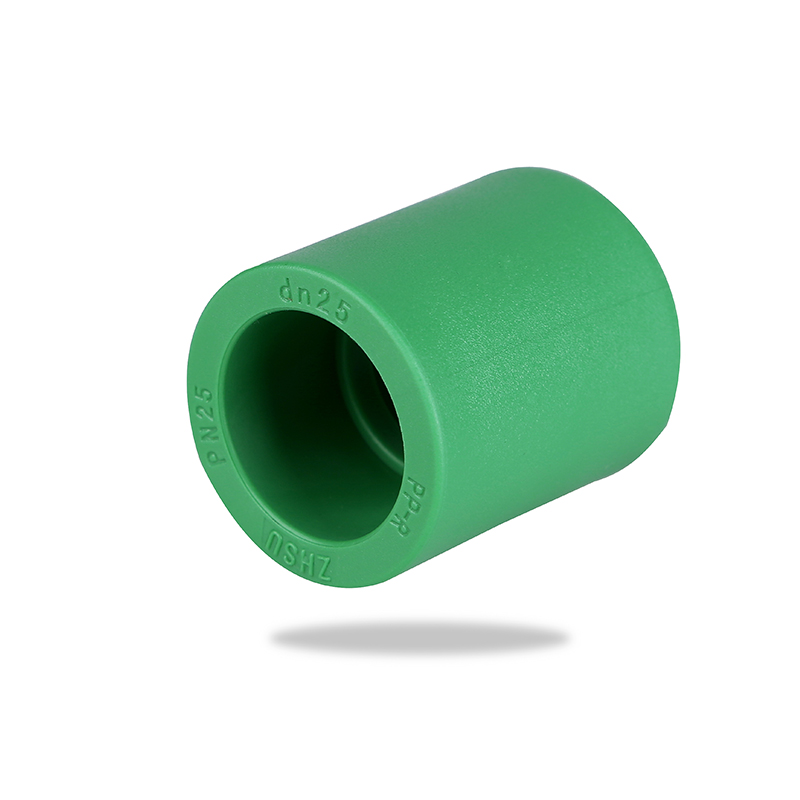

 简体中文
简体中文 English
English русский
русский Español
Español Français
Français عربى
عربى Português
Português 日本語
日本語 italiano
italiano Nederlands
Nederlands Polskie
Polskie
